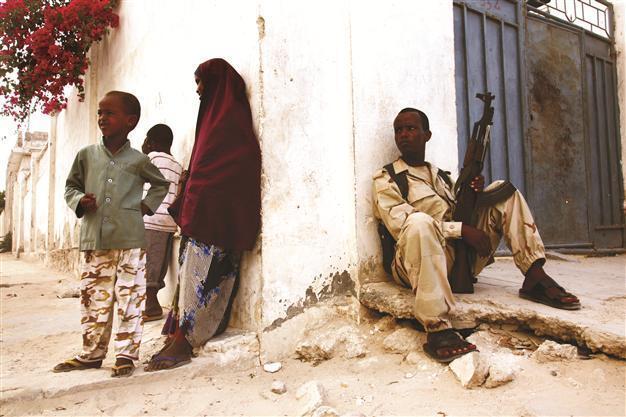Facts, figures and major problems of Somalia
ISTANBUL- Hürriyet Daily News

Peace and sustainability is what Somalis urgently need. Courtesy of Turkish Red Crescent
Somalia, officially the Somali Republic, lies on the east coast of Africa, with Ethiopia to its northwest, Kenya to its west and a short frontier with Dijibouti in the northwest. Mogadishu is the country’s capital and the national language is Somali, but Arabic is also in official use. English and Italian are widely spoken. The country uses the Somali Shilling as its currency. The state religion is Islam, and the majority of Somalis are Sunni Muslims.
With a population of 9.5 million people, Somalia is divided into a total of 18 administrative regions or provinces; the largest city is the capital Mogadishu. Other important towns include Hargeisa (capital of autonomous Somaliland), Kismayo, Garowe (capital of autonomous Puntland) and Merka.
Since the outbreak of the Somali Civil War in 1991 there has been no central government control over most of the country’s territory. The internationally recognized Transitional Federal Government (TFG), which was established in 2004, controls only a small part of the country. Two regional administrations exist in northern Somalia: the self-declared “Republic of Somaliland” in the northwest and the semi-autonomous region of Puntland in the northeast. Somaliland declared itself an autonomous region in 1991. The area of Puntland declared itself also autonomous in 1998. Puntland declared it would remain autonomous until a federated Somalian state was established.
Sheikh Sharif Sheikh Ahmed has been elected president of the country. The president is the chief of state, and the prime minister is the head of the government. The prime minister is responsible for appointing the cabinet, pending approval by the legislature. Abdiweli Mohamed Ali has been prime minister since June 2011. The unicameral legislature is a body of 275 members called the Transitional Federal Assembly. The four largest Somali clans are each allotted sixty-one seats, while minority clans fill the remaining thirty-one seats.
Despite the lack of effective national governance, Somalia has maintained a healthy informal economy, with the gross domestic product (GDP) per capita at an estimated at $600, overall GDP is an estimated $5.9 billion (2010 estimate) and GDP growth at 2.6 percent (2010 estimate). The economy is largely based on livestock, remittance and money transfer companies, and telecommunications. Agriculture is the most important sector, with livestock normally accounting for about 40 percent of GDP and more than 50 percent of export earnings.
ExportsNomads and semi-pastoralists, who are dependent upon livestock for their livelihood, make up a large portion of the population. Livestock, hides, fish, charcoal, and bananas are Somalia’s principal exports, while sugar, sorghum, corn, qat, and machined goods are the principal imports. Somalia’s service sector has also grown. Telecommunications firms provide wireless services in most major cities and offer the lowest international call rates on the continent.
Huge problems remain in Somalia, where one in four Somalis is either a refugee or internally displaced. More than 2.3 million Somalis were still refugees or displaced as of late 2011. Average life expectancy is around 50 years – 58 years for males and 52 years for females. Approximately 24 percent of the population is urban, 31 percent is rural, and 45 percent is nomadic. Of every 1,000 children, 225 will die before they reach their fifth birthday. Somali women average 6.3 births. More than 3.2 million people in Somalia needed humanitarian assistance in 2010, and that number grew by 1 million in the first nine months of 2011. Around 3,500 refugees are fleeing the country daily.
Educational opportunities have been limited at all levels in Somalia. The schools that do manage to function have low enrollment and only the most basic materials, especially in rural areas. More boys than girls receive an education, a fact reflected in the literacy rate: 50 percent among males and 26 percent among females. Unclean drinking water, poor sanitation, malnutrition, refugees, and a high infant mortality rate are all widespread problems. Many diseases are prevalent or have occasional outbreaks, including intestinal illnesses, malaria, cholera, measles, Rift Valley fever, tuberculosis, leprosy, and bilharzia.
